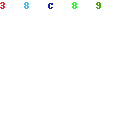1. What do you think the perceptions of distance learning will be in the future 5–10 years or 10–20 years?
2. How can you as an instructional designer be a proponent for improving societal perceptions of distance learning?
3. How will you be a positive force for continuous improvement in the field of distance education?
Distance learning will be a way of life today and in the future. 5-10 years from now distance learning will be almost inevitable due to the popularity resourcefulness efficiency and effectiveness. Much like technological advances such as cell phones and smartphones television, cable and the internet( high speed internet), distance learning will be something so widely utilized that it will be virtually unavoidable inevitable to use because of the reasons previously stated so people feel they cannot do the best possible job without it. This will be due to the fact that distance learning truly gives anybody and everybody willing to learn access to education. Dr. Siemen (2010) ascertains global diversity as a common trend inside distance education (Laureate, Education, Inc.). In 10-20 years distance learning will be norm for home school and in class education. Since schools constantly are in budget constraints distance learning options will alleviate budget stress and learning facilitation issues. Teachers will take on the roles of facilitator as students engage in learning. The blended learning environment will be a must for developing students. However, there will be those that reject ore refuse to adapt that will miss the importance of distance learning instructional design and technology that may stifle learning for some. So, every ID, instructor, and administrator must remain open and adaptable to ensure that every one has the opportunity to engage in quality learning experiences. The only way to change perception is through the positive application of quality learning experiences. This will lead to the balanced development of online and face to face methods of learning or the hybrid model that will dominate all levels of learning.
Improving the societal perceptions of distance learning as an instructional designer will be achieved through the innovative abilities to enhance instruction and learning. Also, discovering new methods and resources to facilitate the enhancement of future generations is another way to support distance learning as an instructional designer. Maintaining the interest and engagement of students is a key focus to show the effectiveness of distance education. The distance models will positive societal perception though influencing the educational perception will critical. By realizing how society communicates the educational setting will have to catch up by broadening their perspective of learning. Having apps and mobile sites features offered at traditional colleges and universities will be a must to attract students. In the next 10 to 20 years millennial presence will influence utilization of the abundantly useful technology resources.
Continuing to possess true curiosity to learn will allow me to make a quality contribution to the improvement of online learning field. Maintaining a thirst for experiencing knowledge through different modes of learning to be aware of the vast resources available enhance my ability to improve instruction. Remaining connected and informed through blogs and educational journals will keep me current on relevant knowledge and changes taking place in the field. This feeds my passion to innovate create and improve learning and instruction.
While it is important to interact and be a part of a learning community being able to have a connection with others is manageable. Also the individual learner’s ability to self-evaluate and motivate to have a clear understanding is one thing that distance learning develops. It gives the individual learner the chance to know what is the ability or capability to achieve or succeed. Furthermore, as an instructional designer remaining in tune with the needs wants realizations and suggestions of learners will show me how to effectively enhance learning, efficiently streamline task completion and communication and ADDIE learning tools and resources.
The growing acceptance can be summarized as the points articulated by George Siemens in the image below: Distance learning will be impacted by the factors articled by Siemens and illustrated below: Further, the Triple helix model, referenced by Siemens, where universities, business and government form a strand of interaction to provide and equip students in the online environment will make the acceptance transition comforting. Making the learner comfortable is the key to continuing to have the world adapt and accept distance learning.
Gambescia, S., & Paolucci, R. (2009). Academic fidelity and integrity as attributes of university
online degree program offerings. Online Journal of Distance Learning Administration,
12(1). Retrieved from
http://www.westga.edu/~distance/ojdla/spring121/gambescia121.html
Schmidt, E., & Gallegos, A. (2001). Distance learning: Issues and concerns of distance learners. Journal of Industrial Technology, 17(3). Retrieved fromhttp://atmae.org/jit/Articles/schmidt041801.pdf
Siemens, George. The Future of Distance Education, ( n.d.) Laureate 2010
Waits, T. & Lewis, L. ( 2003). Distance Education at Degree-Granting Postsecondary
Institutions: 2000–2001. (NCES 200-017). U.S. Department of Education. Washington,
DC: National Center for Education Statistics.



